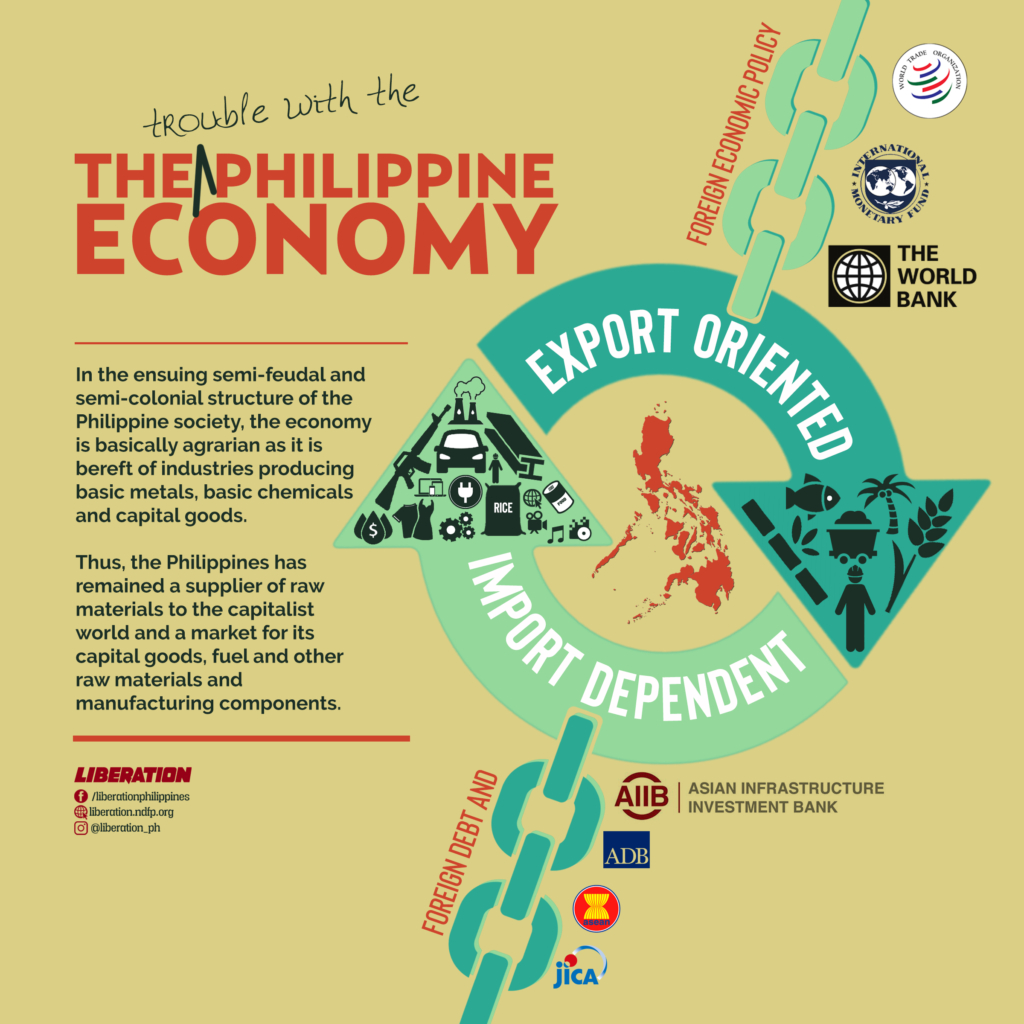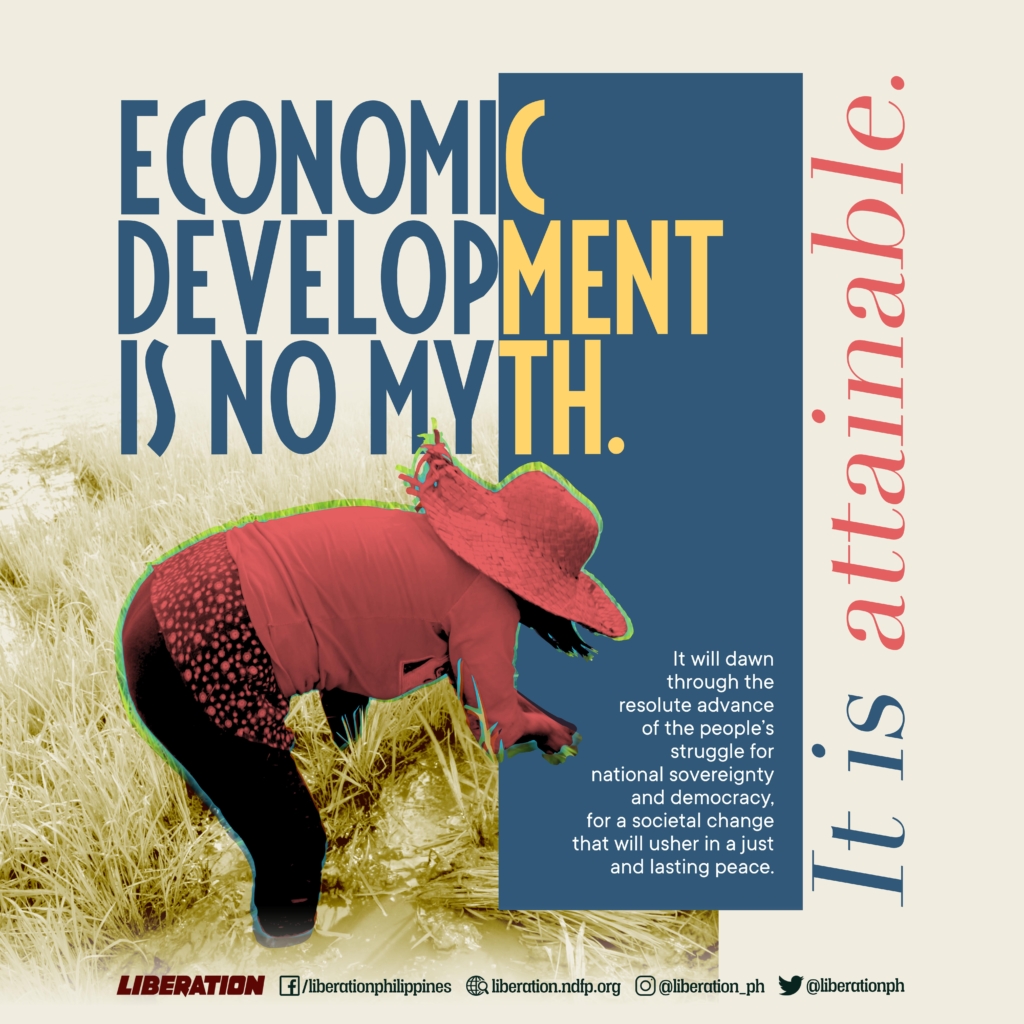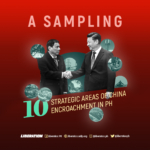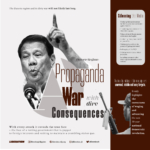DUTERTENOMICS: The Problem is Fundamental

by Vida Gracias and Pat Gambao
The dream was high on words.
On April 18, 2017 President Rodrigo Duterte’s economic team went on a hype to sell to the public “DuterteNomics” in a forum at Conrad Hotel in Pasay City.
All the President’s men where in attendance: Executive Secretary Salvador Medialdea, Finance Secretary Carlos Dominguez, Executive Director Ernesto Pernia of NEDA (National Economic and Development Agency), Budget Secretary Benjamin Diokno, Secretary Mark Villar of the Department of Public Works and Highways, Secretary Arthur Tugade of the Department of Transportation, Secretary Martin Andanar of the PCCO (Presidential Communications Operations Office), President/CEO Vince Dizon of the Bases Conversion and Development Authority, and Board Chair John Gaisano of the Davao City Chamber of Commerce.
They took turns in explaining the President’s economic and development blueprint for the Philippines.
According to the website duterte.today the coined word includes the regime’s “main governance and fiscal policies, comprehensive big-ticket infrastructure programs and upgraded social services targeted to accelerate growth, and by 2022, transform the Philippines into a high-middle income economy.”
A year after that forum and way into its third year “Dutertenomics” remains, at best, a fantasy and, at worst, a catastrophe.
 Difficult times
Difficult times
If government statistics were to be believed Dutertenomics is on its way to making the Philippines the fastest growing economy in Southeast Asia. But the picture on the ground says differently.
Inflation (the rise in the prices of goods and services) is running high—5.2% in June, 5.7% in July, 6.4% in August, 6.8% in September. Damaging as it is, the onslaught of typhoons such as ‘Ompong” and ‘Rosita’ is shooting up inflation. Rising inflation almost always hits the poor the hardest. But even corporate firms complain it cuts into their profit.
On the current rice crisis, the regime has resorted to removing the import quota, importing 750,000 metric tons for 2018. Despite this, rice prices increased 24 times from January to June 2018, according to the Philippine Statistics Authority. At the height of the rice crisis in August, the price of rice in Zamboanga went up to PhP 70 per kilo.
To further arrest price hikes, the regime imposed a suggested retail price (SRP) in four varieties of rice—namely, imported rice, regular local rice, well-milled rice, and whole-grain rice—but with penalties and fines for retailers. Duterte has also certified as urgent the Rice Tariffication Bill, which will remove all quantitative restrictions (QR) on rice importation. Once imports swarm the market the Filipino farmers cannot be competitive.
More severe is the job crisis, according to research group IBON. There are less jobs available in 2018 compared to the start of the Duterte administration. Jobs fell by 295,000 from 40.95 million in July 2016 to 40.67 million in July 2018. IBON conservatively estimates at least 11.3 million unemployed (4.3 million) and underemployed (7.0 million) Filipinos as of July 2018, which is one in four (25%) of the labor force.
A paltry wage hike of PhP 25 plus PhP 10 cost of living allowance was given to workers in the national capital region recently (it’s even lower outside the region). But the PhP 537 minimum wage in NCR alone is way below (or 46.3% short) of the PhP 1,000 family living wage (FLW), or the amount that a family of five needs for decent living as of October 2018.
The brainchild to increase revenues through taxation has been a disaster. Intended to fund the regime’s ambitious “Build, Build, Build” (BBB) program through TRAIN 1 (Tax Reform for Acceleration and Inclusion), the law, which took effect in January 2018, fueled inflation even more.
The excise tax on petroleum, tobacco and sweetened beverages created a domino effect on prices. Government monthly subsidy of Php 200 per family was meant to cushion the effects of TRAIN on the poor specially for 100 million families under the PhP 24-billion unconditional cash transfer program. But this was not fully implemented. Also, whatever tax exemption that is given to minimum wage earners is cancelled out by inflation.
TRAIN 2 (renamed or rebranded as Tax Reform for Attracting Better and High-quality Opportunities or TRABAHO) which takes effect in January 2019 is meant to reduce corporate tax of 30% to 20% and increase incentives for business. Opposing it, the Bayan Muna Partylist said that the loss in government revenues will only benefit big corporations while more taxes will be levelled on the poor.
BBB will drive this country further into debts. Japan is putting in PhP 20.6 billlion, Asian Development Bank (ADB) will extend $7.1 billion in loan assistance, and the China-led Asian Infrastructure and Investment Bank (AIIB) is expected to fund the construction of health facilities, school buildings and roads.
Already, as of December 2017, the country’s total outstanding debt stood at PhP 6.65 trillion. In the four months from January to April 2018, government borrowing has already reached PhP 244.6 billion. As of end-2018, the outstanding debt has reached beyond PhP 7 trillion.
Meanwhile, the peso has depreciated against the US dollar, its weakest in 11 years. Currently standing at PhP 54 to a dollar, it has also become the third weakest currency in the world. This means imports are getting more expensive while exports earn less, leading to greater trade deficits. Export earnings further declined with less shipment of coconut products, fruits and vegetables.
But, interestingly enough, the Bangko Sentral ng Philipinas (BSP) said that the massive trade gap is due in part to the import requirements of the Php 9 trillion (or $180 billion) infrastructure buildup plan of the Duterte government.
Uncertainties
All told, uncertainties surround “Dutertenomics” with Duterte himself fanning it. Many foreign partners, particularly the European Union (EU) and Canada, are put off by Duterte’s crass behavior and attacks. The Asian Review noted that hardly any major European business delegation has visited Manila, due to concerns over rule of law as well as bilateral diplomatic spats, such as the barring of a high-level EU party official, Giacomo Filibeck, a vocal critic of Duterte’s drug war, from entering the Philippines. The EU is the Philippines largest export market, worth $10 billion in 2017.
Whether it be “Dutertenomics”, Benigno (Noynoy) Aquino’s “inclusive growth”, or Gloria Macapagal-Arroyo’s “Strong Republic”, not one regime can claim that it is resolving the nation’s chronic crisis and leading the country to growth.
The situation has just gone from bad to worse. Current and past regimes simply took the road of neoliberalism (liberalization, privatization, deregulation) on the economy as dictated by the imperialist-controlled International Monetary Fund, the World Bank, and the World Trade Organization. The result is disastrous as it aggravates the fundamental problem—of a country remaining semicolonial and semifeudal.
That is why “Dutertenomics” cannot bust poverty, unemployment, inflation, low wages, lack of social services that have bedevilled millions of Filipinos today and in the past. Even more so is the illusion that “Dutertenomics” can raise the status of the majority of Filipinos from being poor farmers and workers to middle class.
 Nature of economy
Nature of economy
The Philippine economy is basically agrarian. It lacks industries that can produce basic metals, basic chemicals and capital goods. Even light industries depend mainly on imported capital goods. Manufacturing involves slight processing or mere assembly of imported components.
Because of its backward, agrarian nature, the country has always suffered from trade gaps or deficits in the balance of trade. Its exports have consisted mainly of low-value agricultural products (sugar, copra, coconut oil), logs, raw extractive minerals, manufactured consumer goods and reassembled components compared to its imports.
To fill in the gap, the government always resorts to borrowing, which is why the country is perpetually in debt, making it more vulnerable to impositions by international creditors.
Over the years, the Philippines has not gone beyond being a supplier of raw materials to the capitalist world, a dumping ground for imported goods, and a source of cheap labor. This is so because the economy remains under the tight grip of foreign monopolists and big local landlords and compradors. And there is no way “Dutertenomics” is ever changing this landscape.
Just look at the 10 Filipino billionaires (Henry Sy, Manuel Villar, John Gokongwei, Enrique Razon, Jaime Zobel de Ayala, Ramon Ang, Tony Tan Caktiong, Lucio Tan, George Sy and Andrew Tan) who made it to the Forbes list. Their investments are tied up into an export-oriented and import-dependent economy. This has uplifted the fortunes of the country’s richest. Under the Duterte regime, at least 19 tycoons were reported to have their networth shift 20% or more over the past year.
The country is rich in land, human and natural resources (mineral, waters, marine, flora and fauna) and could very well develop into a prosperous, self-reliant economy. But “Dutertenomics” will only further worsen the country’s dependence on US and other imperialist powers, notably through TRAIN and cha-cha (charter change).
 Key to development
Key to development
The Filipino people have cried for true agrarian reform and national industrialization as the key to development. But this has been totally ignored and mocked by “Dutertenomics”, which does not only retain and expand private monopolies but would even allow 100 percent foreign ownership of agricultural land.
As “Dutertenomics” creates more havoc to the economy, the more people look up to the National Democratic Front of the Philippines in laying down the fundamentals for a sound economy. The NDFP’s proposed Comprehensive Agreement on Social and Economic Reforms (CASER) which was presented and discussed in the scuttled NDFP-GRP peace talks is an economic blueprint that has come out of the insights and practices of several decades of revolutionary struggle.
In the countryside it is common knowledge that the the Communist Party of the Philippines (CPP) and its armed wing, the New People’s Army (NPA), are carrying out agrarian reform as the main content of the democratic revolution. This consists of a minimum and a maximum program. Minimum includes rent reduction, elimination of usury, setting of fair farm-gate prices and promotion of agricultural production and sideline occupation through independent households and rudimentary cooperation. Maximum involves the confiscation of land from the landlords and land grabbers and free land distribution and agricultural cooperation in stages.
Freeing the economic forces in the countryside will serve as basis for the advent and growth of more industries that, under the supervision of the people’s democratic state, would lead to the fulfillment of the people’s basic needs and bring this country to peace and prosperity.



